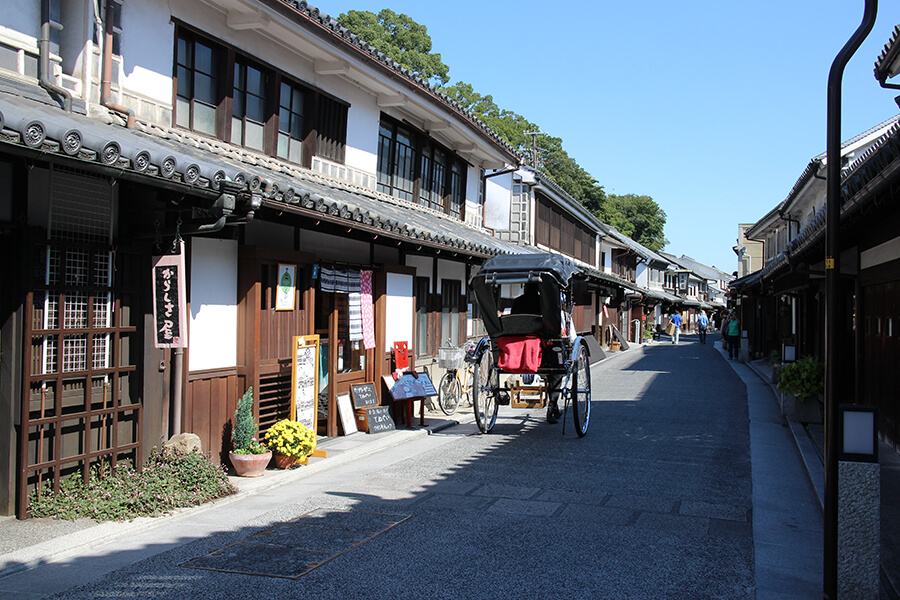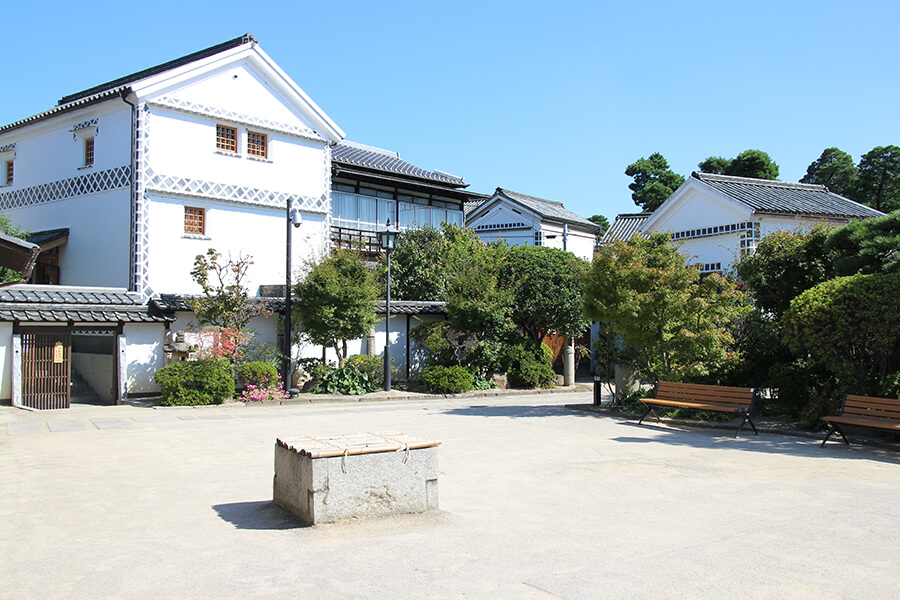TOURISM
INFORMATION
- HOME
- Tourism Information
- Kurashiki Higashimachi

As it continues from Honmachi Street, Higashimachi Street is also a street where you can feel the exquisite harmony between history and everyday life. It has a more relaxed atmosphere than Honmachi Street and is less touristy, so you can get a glimpse of the quiet lives of the people. Starting with the grand presence of the Kusunoki family, a kimono merchant, the eaves roof signs and remnants of wells that can be seen here and there in the old townscape, this is a street where you can feel the unique charm of Kurashiki.
The Kurashiki Byobu Festival is held every year in mid-October, attracting many visitors.
Access Map
OTHER
INFORMATION
-
Ohara Museum of Art

Ohara Museum of Art is Japan's first private Western art museum, established in 1930. It was founded by Ohara Magosaburo, a businessman who contributed to the cultural development of Kurashiki. It consists of the main building, an annex, the Crafts and Oriental Gallery, and the Torajiro Kojima Memorial Hall (currently only the exterior can be viewed), and houses and exhibits approximately 3,000 works from across countries and eras, including masterpieces of Western art, Japanese Western paintings, sculptures, and crafts. The main building exhibits famous Western masterpieces such as El Greco's "The Annunciation," Claude Monet's "Water Lilies," Renoir, and Gauguin.
VIEW MORE
There is also a museum shop on site, which sells reproductions of famous paintings from the museum's collection, as well as stationery and accessories featuring the artworks.
*The branch library is currently closed for an extended period. -
Kurashiki Honmachi Street

Kurashiki Honmachi Street, located on the north side of the Kurashiki River, is a street lined with lacquered townhouses, giving off a down-to-earth atmosphere. This area still retains many vestiges of the Edo period, but it is also lined with many old shops and residences closely linked to daily life, making it a vibrant place where you can feel the lifestyle and breath of the people who live there.
VIEW MORE
Recently, there has been a surge in efforts to revive these townhouses, and a variety of shops have opened in renovated houses, including Kurashiki canvas shops, a traditional craft, hat shops, boutiques, galleries, cafes and ice cream shops, and the area continues to transform into an interesting mix of "tradition" and "modern." You can stroll around the area enjoying the relaxed atmosphere and bubbling energy. -
Kurashiki Story Museum

Kurashiki Monogatarikan was constructed in the mid-Edo period, and its dignified Nagayamon gate on the south side, the alley on the west side, and the four storehouses create a beautiful and calm atmosphere, conveying the atmosphere of the Edo period to the present day.
VIEW MORE
The Kurashiki Story Hall was renovated by the city of Kurashiki from the former Higashi Ohashi family home, and opened in 2009 as a tourist hub to improve the mobility of tourists visiting Kurashiki, and as a place for cultural exchange and activities for local residents. As it is located at the entrance to the scenic area, it plays the role of first conveying the "Kurashiki-ness" to tourists visiting the scenic area.
The main Nagayamon gate is used as a tourist information corner, and the first floor of the two-story wooden main building in the center of the site houses an exhibition corner that conveys the traditional townscape of Kurashiki. Other facilities include a multi-purpose hall, exhibition room, and cafe.

